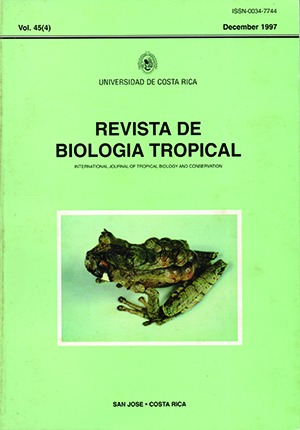Resumen
Two patches of the tropical weed Triumfetta semitrilóba Jacq. (Tiliaceae) were studied in Viyosa, Southeastem Brazil, in the 1994 flowering season (March to May). Ten plants per patch, and five flowers per plant were randomly chosen for the following pollination tests: self-pollination; control; bee control; high load of crosspollen and high load of self-pollen. Fruits were collected to study seeds. Results for role of pollinators and pollen linútation in seed production were different between patches, probably because of differences in patch "quality" (nutrient availability, nÍlmber of flowers per plant and per patch, pollinator abundance). Seeds initiation. was independent of pollinators, but seed initiation and seed set were increased by pollinators. Seed production was Unútedby pollen, as seed initiation and seed set were jn¡:reased by high load of cross-pollen, only in one patch. Nevertheless, nutrients may also be limiting seed production, because ahigh load of cross-pollen did not maximize seed production, in either patch. Fruit abortion was higher in se1f-pollination and high load of se1f-pollen treatments, possibly because of selective abortion of self-progeny and fruits with less seeds. As expected for a weed species, T. semitrilobil has a breeding system where seed production is guaranteed by self-pollination, but the presence of bee pollinators increases seed set, and probably improves seed quality by cross-pollination. Differences between.patches showed that this species may experience spatial differences in reproductive success, with patches where seed production is limited by nutrients, patches limited by pollen, and patches where seed production is limited by both.##plugins.facebook.comentarios##

Esta obra está bajo una licencia internacional Creative Commons Atribución 4.0.
Derechos de autor 1997 Revista de Biología Tropical
Descargas
Los datos de descargas todavía no están disponibles.


